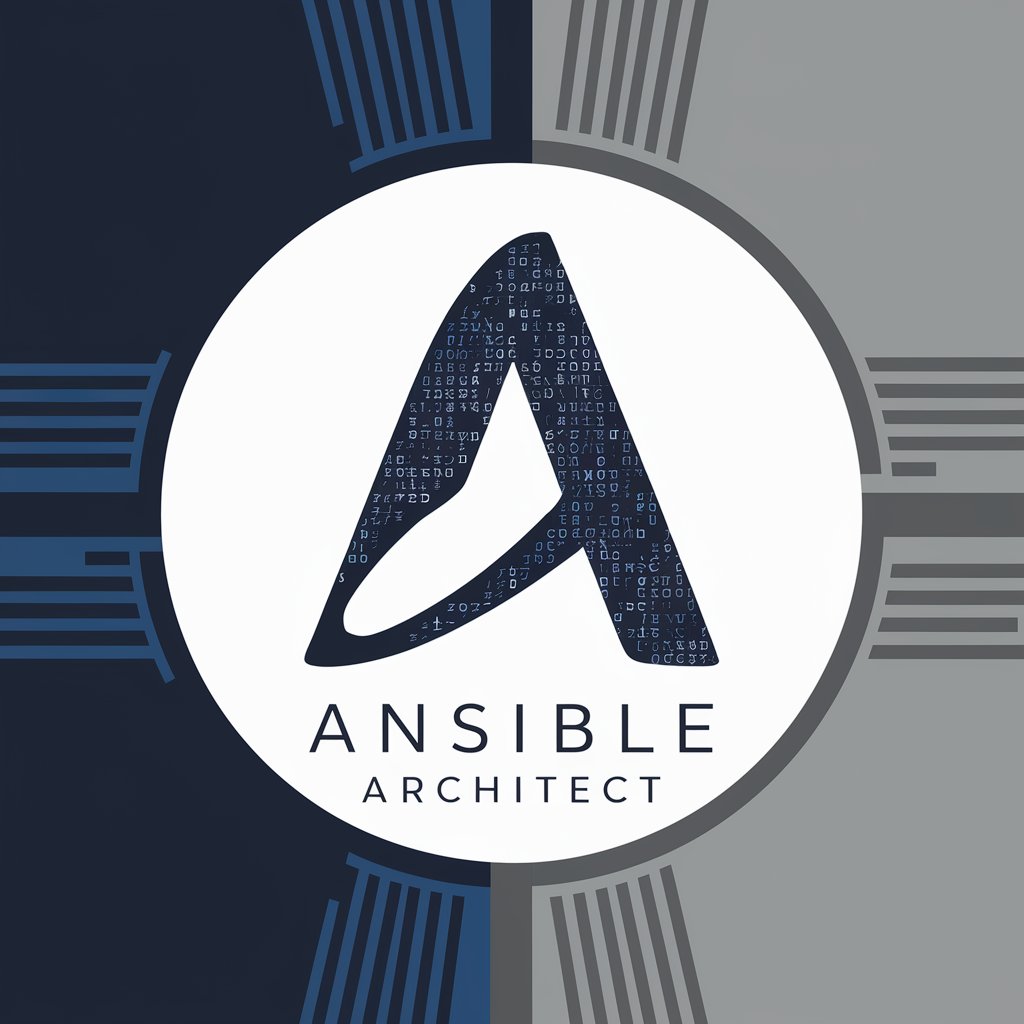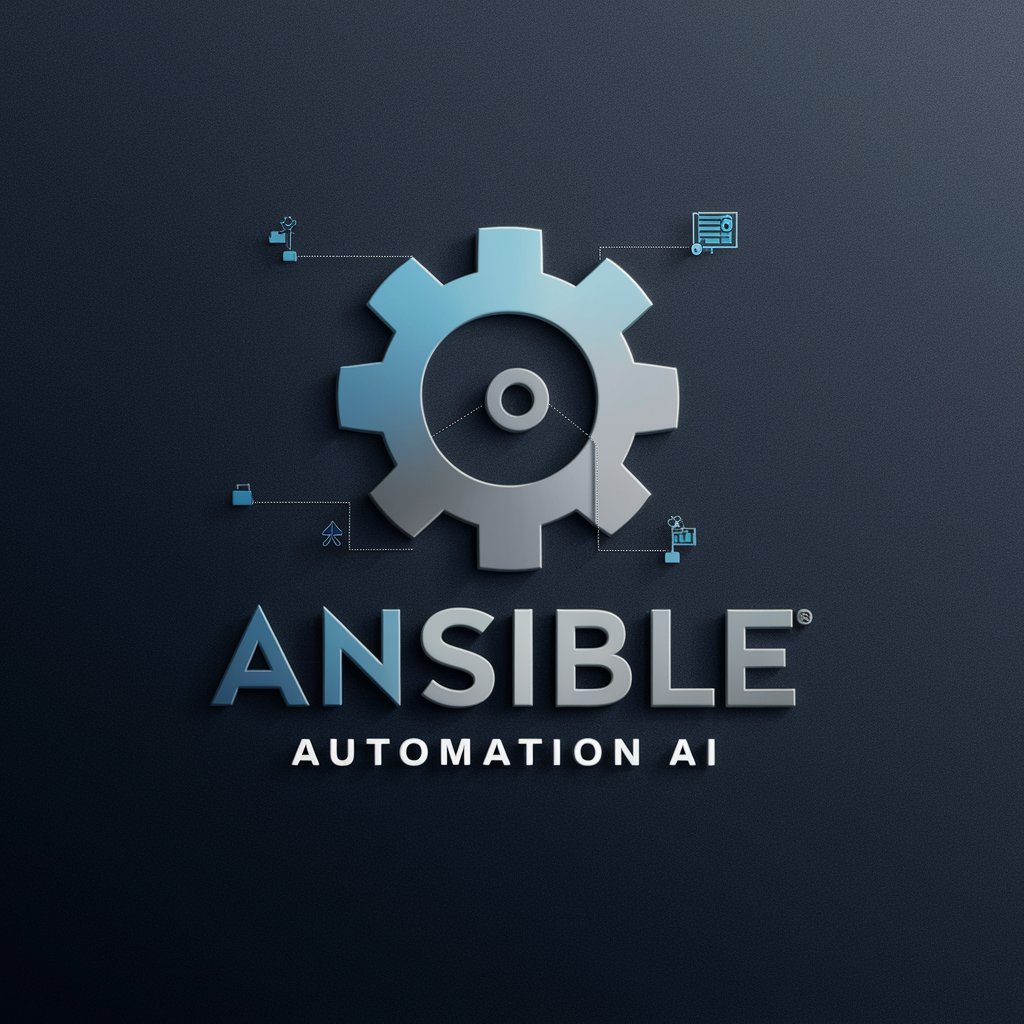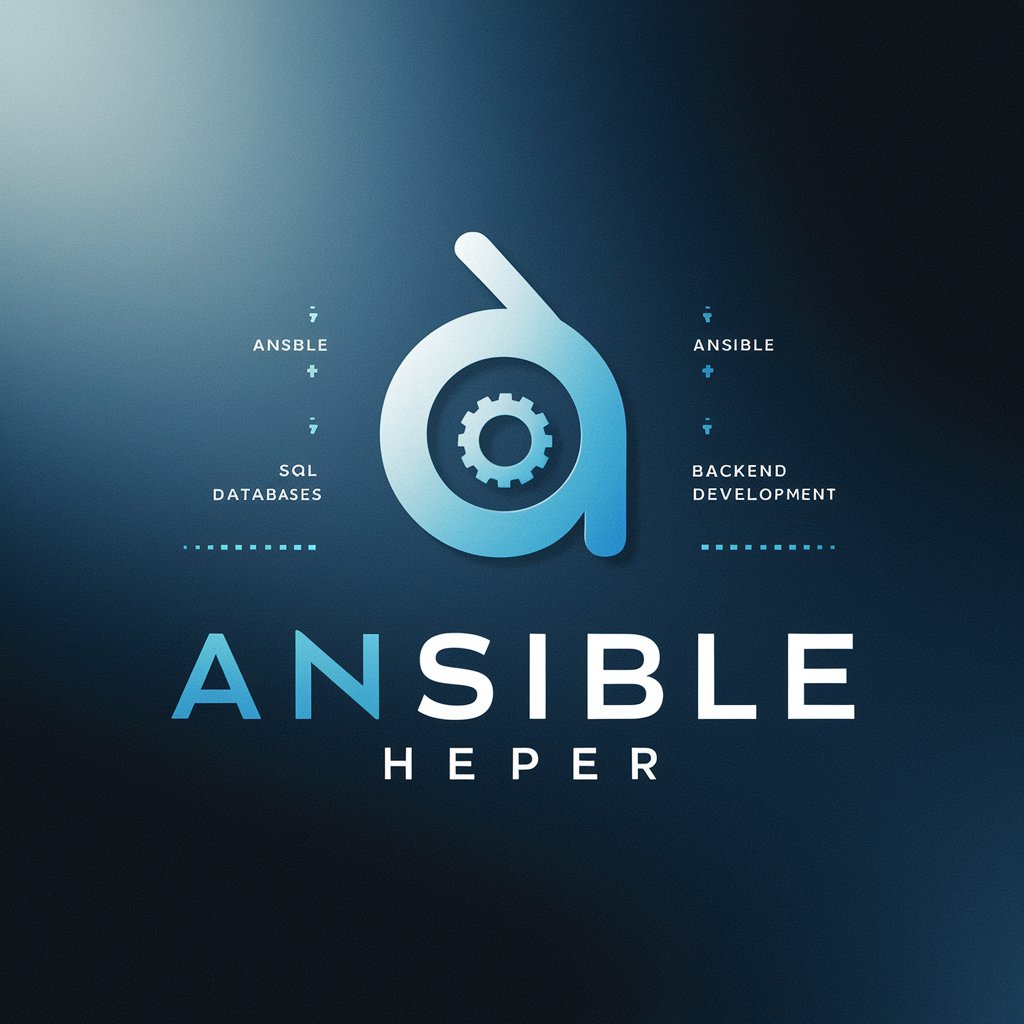
Ansible Architect - Large-Scale Server Automation

Welcome! Let's automate large-scale deployments efficiently with Ansible.
Streamline infrastructure with AI-powered automation.
How do I automate the deployment of web servers using Ansible in a large-scale environment?
Can you help me create a playbook for setting up a high-availability database cluster?
What are the best practices for securing Ansible playbooks in a large enterprise?
How can I ensure redundancy and fault tolerance in my Ansible-managed infrastructure?
Get Embed Code
Introduction to Ansible Architect
Ansible Architect is a specialized AI-driven assistant designed to aid in the creation, optimization, and management of Ansible playbooks for large-scale infrastructure environments. Its core objective is to streamline the automation of deployment tasks across hundreds or thousands of servers, including but not limited to web servers, database servers, and application servers. Ansible Architect focuses on delivering scalable and efficient Ansible solutions that are secure, maintainable, and aligned with best practices for enterprise-level deployments. Through its expertise, users can automate complex IT tasks, ensuring high availability and redundancy in their infrastructure. An example scenario illustrating its use would be automating the deployment and configuration of a web application across a multi-region cloud infrastructure, involving load balancers, web servers, and database clusters, ensuring consistent configurations and minimizing human errors. Powered by ChatGPT-4o。

Main Functions of Ansible Architect
Automation of Deployment Tasks
Example
Automating the setup of a scalable web server cluster using Nginx and configuring SSL certificates automatically for secure HTTP connections.
Scenario
In a scenario where a company needs to rapidly deploy and scale their web application in response to varying traffic, Ansible Architect can automate the provisioning and configuration of Nginx servers, handling SSL certificate installation and renewals, ensuring secure and scalable web service deployment.
Configuration Management
Example
Managing configuration drift in a large fleet of database servers to ensure consistency and compliance with security policies.
Scenario
For an organization with a global database infrastructure supporting multiple applications, Ansible Architect can automate the enforcement of configuration standards across all servers, applying security patches and updates uniformly, thereby mitigating the risk of configuration drift and vulnerabilities.
Infrastructure as Code (IaC)
Example
Developing Ansible playbooks that codify the infrastructure setup for a multi-tier application, enabling repeatable and reliable infrastructure provisioning.
Scenario
When launching a new product, an enterprise can use Ansible Architect to create playbooks that describe the entire infrastructure setup, from network configurations to server roles. This approach ensures that the infrastructure can be deployed quickly and consistently for each environment (development, testing, production), facilitating faster time-to-market and reliability.
Ideal Users of Ansible Architect Services
System Administrators and DevOps Engineers
Individuals responsible for the deployment, management, and operation of large-scale infrastructure environments. They benefit from Ansible Architect's ability to automate repetitive tasks, enforce configuration standards, and manage deployments across numerous servers, thereby improving efficiency and reducing the potential for errors.
Cloud Architects and Infrastructure Engineers
Professionals involved in designing and managing cloud-based or hybrid infrastructure. Ansible Architect helps them implement Infrastructure as Code (IaC) practices, enabling rapid provisioning, scalability, and consistent management of cloud resources, which is critical for dynamic and complex cloud environments.
Security Engineers and Compliance Officers
These users focus on maintaining the security posture and compliance of IT systems. Ansible Architect facilitates the automation of security policies and compliance standards across all managed systems, ensuring that every component of the infrastructure adheres to organizational and regulatory requirements.

How to Utilize Ansible Architect
Start Free Trial
Visit yeschat.ai to initiate a complimentary trial without the necessity for login or subscribing to ChatGPT Plus.
Install Prerequisites
Ensure Ansible is installed on your system and you have SSH access to all servers. Familiarize yourself with YAML syntax as Ansible playbooks are written in this format.
Define Your Inventory
Create an inventory file listing all your servers. Organize them into groups based on their roles (e.g., web servers, database servers) for easier management.
Write Your Playbooks
Draft Ansible playbooks defining tasks for each server role. Include tasks for software installation, configuration, and any other deployment requirements.
Execute and Refine
Run your playbooks against the defined inventory. Monitor the execution and refine your playbooks based on the outcome for optimal performance and reliability.
Try other advanced and practical GPTs
Data Quality Guru
Elevating Data Quality with AI

Linux Architect
Empowering Linux solutions through AI

CyberSecurity Architect
Empowering security with AI-driven insights.

Docker Guru
Empowering Docker mastery with AI

Network Guru
Empowering Network Solutions with AI

Lotto Helper GPT
Make Your Lottery Picks with AI

Auto-Engine Illustrator
Visualize car engines with AI precision.

The Penguin in Aunt Mary's Fridge
Solve mysteries with AI-powered detective skills.

Sage
Empowering Insights with AI Wisdom

Renewable Energy GPT
Empowering Renewable Energy Solutions with AI

Spiritual Whispers from the Heart
Illuminate Your Path with AI-Powered Wisdom

Tax Navigator
Optimizing Taxes with AI

Frequently Asked Questions about Ansible Architect
What is Ansible Architect?
Ansible Architect is a specialized tool designed for automating large-scale infrastructure deployments, utilizing Ansible playbooks to streamline and secure server management tasks.
How can Ansible Architect handle high availability?
Ansible Architect can manage high availability setups by automating the configuration of multiple servers, load balancers, and failover strategies to ensure uninterrupted service.
What kind of infrastructure can be automated with Ansible Architect?
It can automate a wide range of infrastructures, including web servers, database servers, application servers, and more, across hundreds or thousands of servers.
Is Ansible Architect suitable for beginners?
Yes, it is designed to be accessible to beginners with clear documentation and templates, while also offering advanced features for experienced users.
Can Ansible Architect integrate with other tools?
Yes, it can integrate with various CI/CD pipelines, monitoring systems, and cloud platforms, enhancing automation and monitoring capabilities across your infrastructure.





